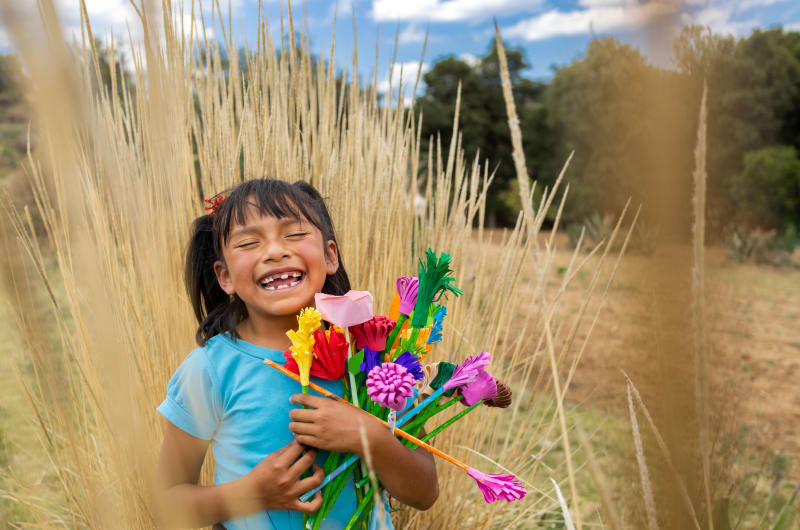“Who is my neighbour?” Jesus was asked this question in a provocative conversation about living out the Great Commandment—to love God and love your neighbour (Luke 10:27). To answer, Jesus paints a vivid picture through a simple story.
The parable of the Good Samaritan is beloved because it brings the Great Commandment to life, essentially showing us the answer to one man’s question—Who is my neighbour?—is at the heart of a life of faith.
Inviting us to understand and express God’s heart in our broken and vulnerable world, Jesus introduces the characters of the Good Samaritan parable with a threefold purpose: to help us see the need for compassion in the world around us, feel compassion toward those around us and move with compassion.
Today, we invite you into another story that demonstrates God’s heart and reveals that there are so many tangible opportunities to move with compassion in our world today. Patrick, a 13-year-old from Rwanda, is a living, breathing answer to the question who is my neighbour?
Patrick’s story

Patrick shivered as the cold water hit his face.
He ducked his head and splashed himself again before heaving the jerry can onto his shoulder. Dripping but wide awake, he began the long walk home as the sun finally peeked over the horizon.
Waking up as early as 5:30 a.m. to fetch water from the well was a task 13-year-old Patrick had to complete every day before heading off to school at 7:30 a.m.
“I would drag myself out of bed and carry an empty 20-litre jerrycan to the well. The cold water stung my cheeks, and I would stay awake,” says Patrick.
In Rwanda, only 57 per cent of the population have access to safe drinking water within 30 minutes of their home—any water closer by is usually contaminated. Rather than risk severe illness or even death from water-borne diseases such as dysentery and typhoid, they fetch water to carry home.
In most cases, children are given this task. That’s why Patrick was very accustomed to the daily routine of walking for water—and he would often repeat the trek after school.
“The distance from my home to the well is two kilometres. When I was young, I would carry a five-litre jerrycan of water—but the older I grew, the bigger the jerrycan became,” he says.
Despite it being a physically demanding task, Patrick always did his best to also help his grandmother with other household chores.
“I live with my grandmother who takes care of me. Besides going to school, there are two important tasks I have to do every day—I have to collect grass to feed the cows and fetch water that will be used for cooking food and for bathing,” he says.

The need for safe water
Patrick’s struggles were his community’s struggles. Many households—specifically their children—faced the same chore of collecting water and the same risk of illness and missing school.
Even the local Compassion centre was affected. Shyaka, the centre director, says the program staff spent a lot of money to buy water for the children to use.
“We were forced to hire a car every Friday and Saturday to collect water that was to be used to cook and for the children to wash their hands. We spent more than 50,000 RWF (CAD$50) on the car hire each weekend,” says Shyaka.

But because Shyaka and the centre staff recognized that unsafe water was at the heart of much of the community’s struggle, they knew that providing water would protect the children’s health, save money on medical bills and improve school attendance.
The difference that water makes
Patrick’s local Compassion centre decided to launch an intervention to install water tanks and pipe water connections at the centre. The intervention cost 4,500,000 RWF (around CAD$4,600) and was completed in June 2022. In the two years since the water project was completed, the community has seen its confidence rise. Families like Patrick’s have hope for a better future.
“We are grateful for the partnership we have with Compassion, especially for when they help us in resolving challenges we face in our communities,” says Shyaka. “The plastic water tanks help to harvest rainwater for use during the dry season when there is a shortage of water.”

Now, instead of arriving at school every morning tired and sore from carrying water, Patrick walks into class bright-eyed and on time.
“I’m excited to say that I no longer walk to the well to fetch water, thanks to Compassion installing the new water tanks and water connection,” says Patrick. “Today I fetch water at the centre, so I don’t have to wake up so early in the morning or walk eight kilometres a day with a 20-litre jerrycan.”

Who is your neighbour? Patrick is.
How will you move with compassion for him?
Give to Water, Sanitation and Hygiene
Engage deeper with the story:
- Who do you think were the “good neighbours” in this story?
- What made them good neighbours?
- How did they see Patrick’s need for compassion?
- What do you think they felt when they encountered his crisis?
- How did they move with compassion?
- Where do you see yourself in the story?
- How does this story inspire you to live out the Great Commandment (to love God and love your neighbour)?
Photos by Doreen Umutesi. Words by Doreen Umutesi and John Ayena.





